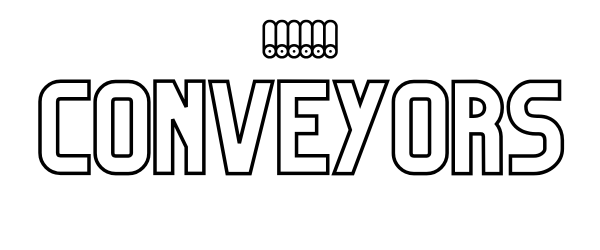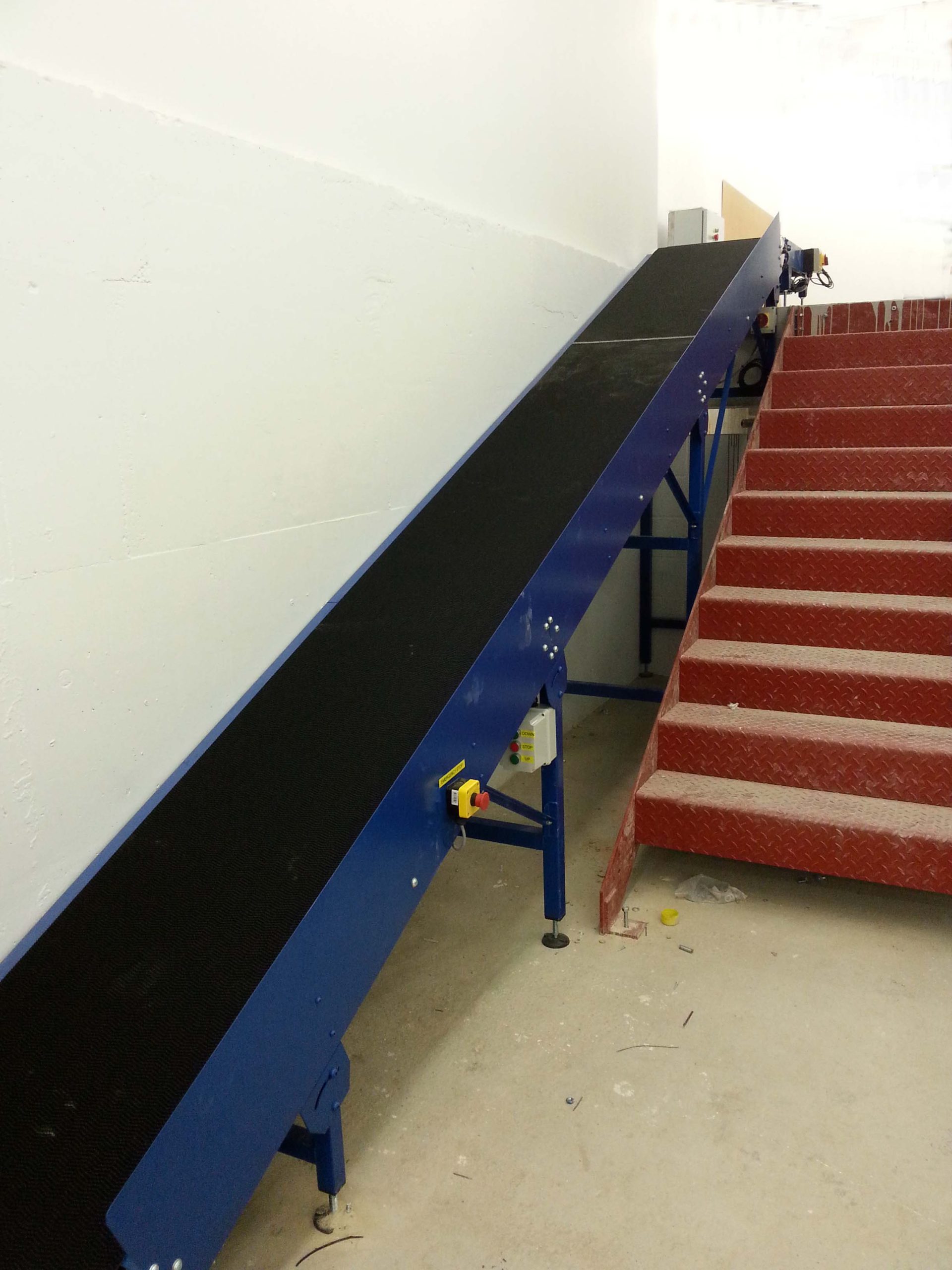Warehouses are under pressure to move goods faster, safer, and more efficiently — especially during peak production and distribution seasons. A well-designed conveyor system reduces bottlenecks, improves order accuracy, and maximizes floor space.
Let's break down the most effective conveyor systems for warehouses, their subcategories, and the best use cases for each.
Belt Conveyors for Warehouses
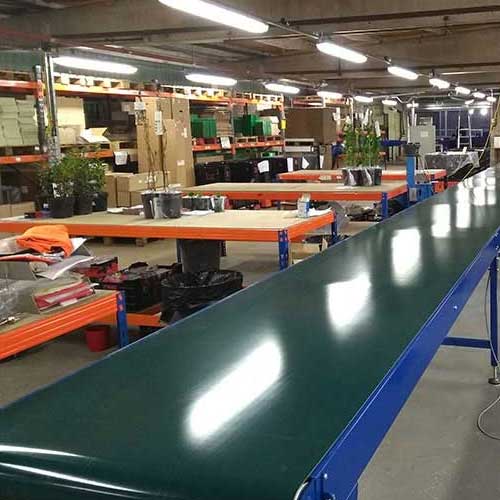
Belt conveyors are one of the most versatile systems, designed to move boxes, packages, or irregular-shaped items across long distances.
Subcategories of Belt Conveyors:
-
Flat Belt Conveyors – standard design for moving packaged goods on level surfaces.
-
Incline/Decline Belt Conveyors – perfect for elevation changes between floors or mezzanines.
-
Cleated Belt Conveyors – belts with raised sections to prevent goods from sliding backward on inclines.
-
Sanitary/Heavy-Duty Belt Conveyors – designed for dusty, abrasive, or high-volume warehouse environments.
Best Use Cases:
-
Moving packaged goods between zones.
-
Order fulfillment lines.
-
Linking different warehouse departments.
Modular Belt Conveyors for Warehouse
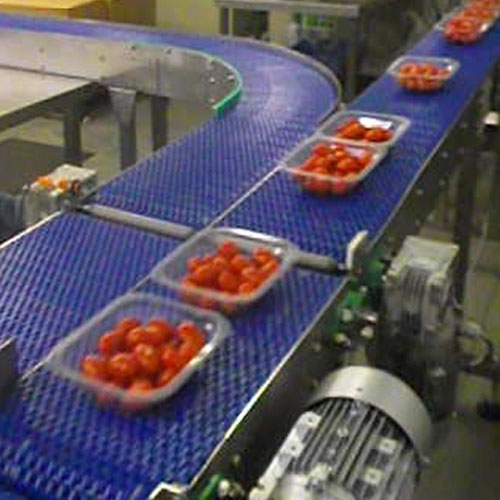
Unlike continuous belts, modular conveyors use interlocking plastic segments. They’re durable, flexible, and easy to repair if a section gets damaged.
Subcategories of Modular Conveyors:
-
Straight Modular Conveyors – simple layouts for forward product flow.
-
Curved Modular Conveyors – navigate tight spaces without product disruption.
-
Z-Shaped Modular Conveyors – combine horizontal, incline, and decline sections for multi-level flow.
Best Use Cases:
-
Warehouses with space restrictions.
-
High-volume operations that need durability.
-
Areas requiring frequent cleaning or maintenance.
Roller Conveyors

Roller conveyors use cylinders (rollers) to transport goods. They are ideal for boxes, totes, and pallets.
Subcategories of Roller Conveyors:
-
Gravity Roller Conveyors – goods move naturally using gravity, no power needed.
-
Powered Roller Conveyors – use motors to move heavy or large items consistently.
-
Accumulation Roller Conveyors – control product spacing, preventing collisions.
-
Pallet Roller Conveyors – heavy-duty rollers for warehouse pallet handling.
Best Use Cases:
-
Loading and unloading zones.
-
Short-distance transfer of cartons or pallets.
-
Staging products for packaging.
Mezzanine & Floor-to-Floor Conveyors
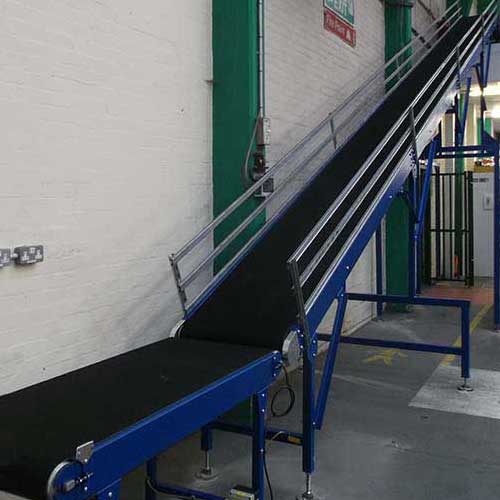
Warehouses with multi-level storage or mezzanine floors need conveyors that move products vertically.
Subcategories of Mezzanine and Floor-to-Floor Conveyors:
-
Incline Belt Conveyors – angled belts move products between floors.
-
Vertical Reciprocating Conveyors (VRCs) – lift-like systems for heavier loads.
-
Spiral Conveyors – continuous flow systems that move goods up or down in a spiral pattern.
Best Use Cases:
-
Multi-level warehouses.
-
Order fulfillment centers with mezzanine picking areas.
-
Replacing forklift or manual lifting.
Vehicle Loading & Unloading Conveyors
Loading docks often create bottlenecks. Flexible and mobile conveyors are designed to extend directly into trucks or containers, speeding up loading/unloading.
Subcategories of Mezzanine and Floor-to-Floor Conveyors:
-
Telescopic Belt Conveyors – extendable conveyors for vehicle loading.
-
Flexible/Expanding Roller Conveyors – expand, bend, and curve to fit into trucks.
-
Portable Mobile Conveyors – wheeled systems that can be repositioned as needed.
Best Use Cases:
-
High-volume distribution centers.
-
Seasonal peak delivery periods.
-
Dock operations with multiple vehicles.
Incline & Adjustable Conveyors
Incline conveyors move goods between elevations and are often adjustable to match different floor levels or mezzanines.
Subcategories of Incline & Adjustable Conveyors:
-
Cleated Incline Conveyors – prevent slipping when transporting cartons or bags.
-
Adjustable Height Conveyors – mobile designs with adjustable angles for flexibility.
-
Overhead Conveyors – utilize ceiling space to move goods above ground-level traffic.
Best Use Cases:
-
Connecting storage floors.
-
Moving goods to elevated packing areas.
-
Maximizing vertical warehouse space.
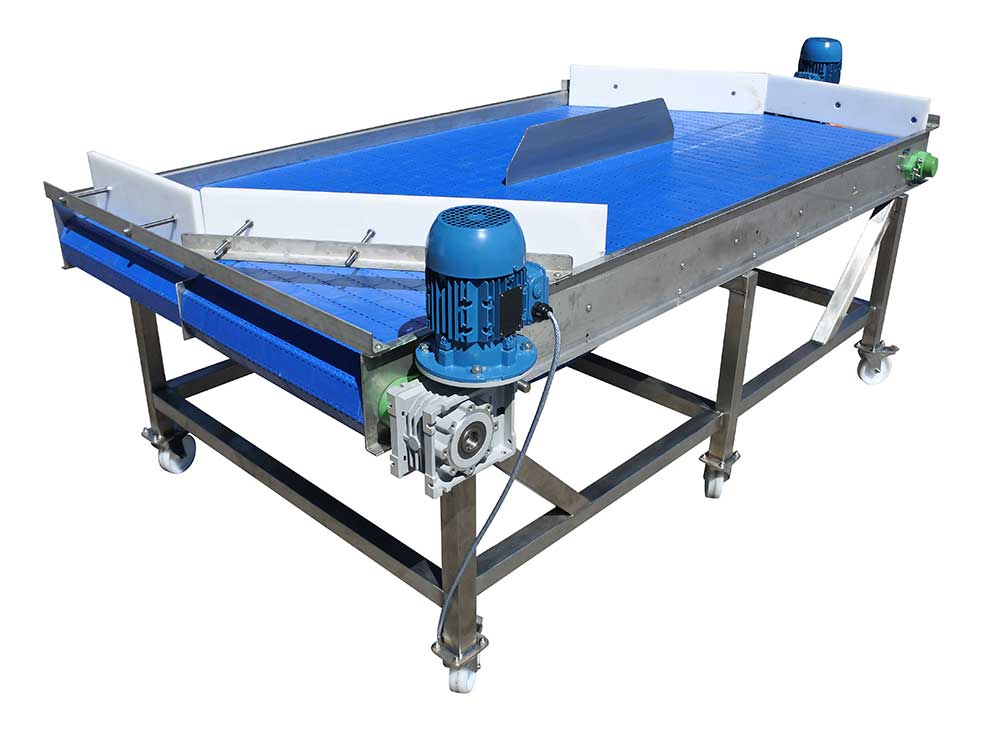

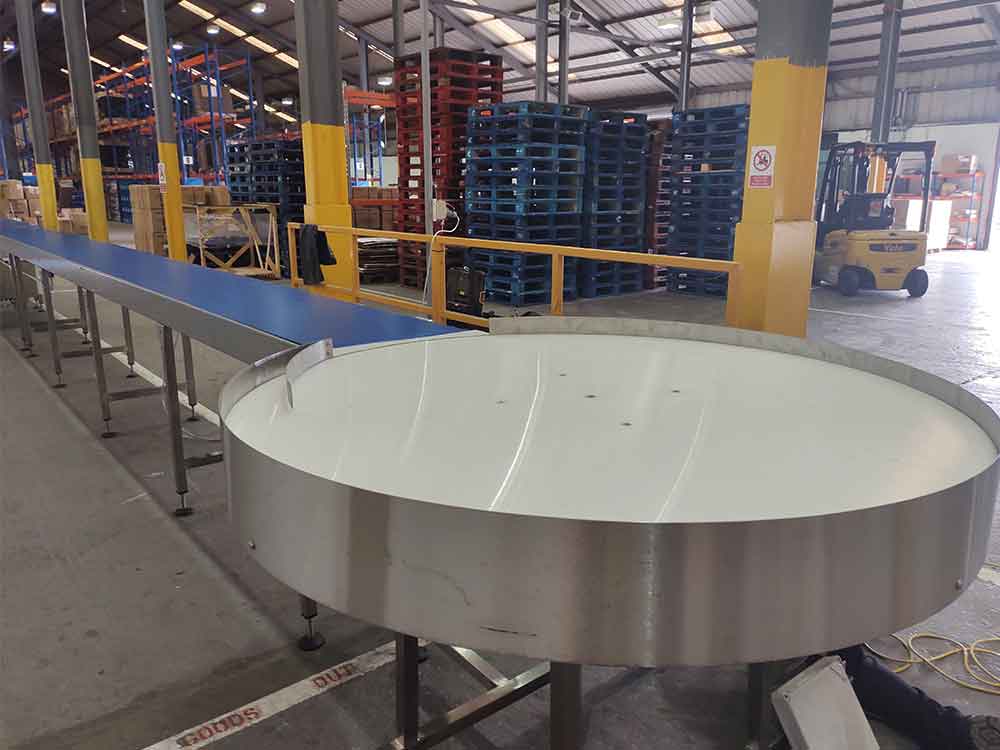
Powered & Accumulation Conveyors
Powered conveyors automate product flow, while accumulation conveyors manage product buildup without causing jams or damage.
Subcategories:
-
Zero-Pressure Accumulation Conveyors – products accumulate without touching each other.
-
Low-Pressure Accumulation Conveyors – products can lightly touch but flow is controlled.
-
Chain-Driven Powered Conveyors – for heavy-duty pallets or bulk goods.
Best Use Cases:
-
Automated packaging and sorting lines.
-
Fragile product handling.
-
Staging goods before palletizing.
Rotary & Turntable Conveyors
Rotary conveyors (also called turntables) rotate goods, making it easy to redirect flow or assist with manual picking.
Subcategories:
-
Accumulation Rotary Tables – temporarily hold goods before the next process.
-
Transfer Turntables – redirect goods to different conveyor lines.
Best Use Cases:
-
End-of-line packaging.
-
Sorting and redirection in tight warehouse spaces.
-
Manual picking or inspection stations.
Why the Right Warehouse Conveyor System Matters
-
Faster order fulfillment and dispatch.
-
Improved worker safety.
-
Reduced manual handling.
-
Optimized warehouse space.
-
Increased throughput during seasonal peaks.
👉 Looking for a conveyor company or belt conveyor manufacturer? Our warehouse conveyor systems are designed to fit your space, product flow, and operational demands.




